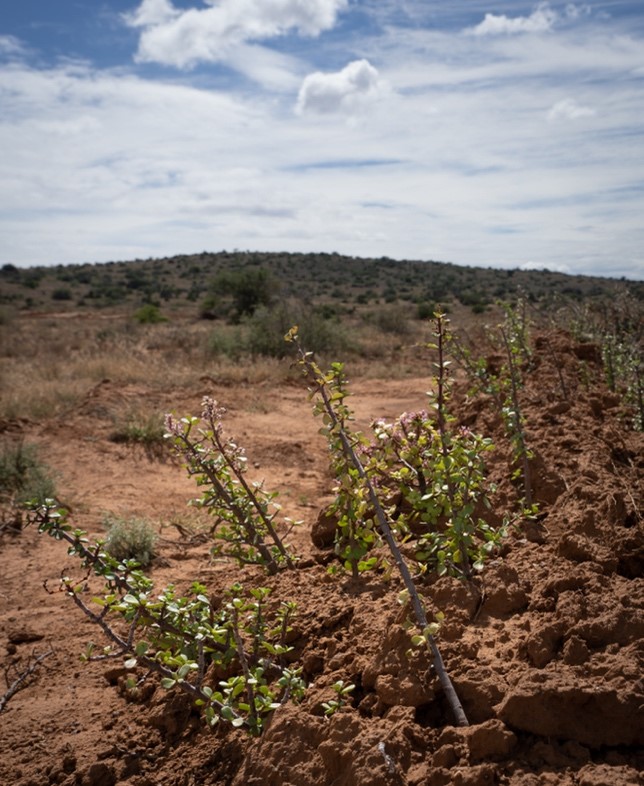Land Rehabilitation
Over the last six months we have been trialling new methods of land rehabilitation in an area of severe erosion along the access road to the lodge. The best way to restore land varies from place to place and is specific to each ecosystem and vegetation type. Across the Eastern Cape, there are well over a million hectares of land that have been degraded through unsustainable farming practice and could benefit from restoration. However, land restoration is relatively new in the Eastern Cape so the best techniques for restoring the land have not yet been established.
In the case of the Eastern Cape, the main issues have been caused by goat farming. The effect of fences and high stocking rates meant that large areas of dense indigenous thicket became degraded over the last hundred and fifty years. Once overgrazing exposes the soil, the land becomes dessertified as the unprotected topsoil is then washed away by rains and the ground, now fully exposed to the sun, becomes too hot for most things to grow and hardens to a crust.
Once the bare earth develops a hard crust, the issue is exacerbated as moisture can no longer penetrate the soil to plants’ roots and so runs off the land – a big issue in an arid climate such as the Eastern Cape. Rain falling on the hard crust now builds up speed as it runs off, especially on steeper slopes. This fast run off now causes problems of erosion creating deep ‘dongas’ (drainage ditches) and further removing valuable topsoil from the land.

In an arid low rainfall climate such as Kuzuko, the desertification means that natural processes are unable to restart. Even after 20 years without goat farming, the veldt has struggled to recover in places and areas where farming was particularly intense, such as where farmhouses were located, are still clearly visible.
At Kuzuko we have been working with a number of local experts to trial a range of techniques in an area of severe erosion. These include building multiple small obstructions to obstruct water run-off and retain moisture, planting spekboom to anchor the soil and stimulate growth and a variety of dead plant materials to add nutrients to the soil, shade the soil surface to create a microclimate for new growth and further retain moisture.
With our partners at Nelson Mandela University we will be monitoring the success of different combinations of techniques and this information will then be used to help inform the best methods of restoration across other areas of the reserve as well as other reserves in the Eastern Cape.


